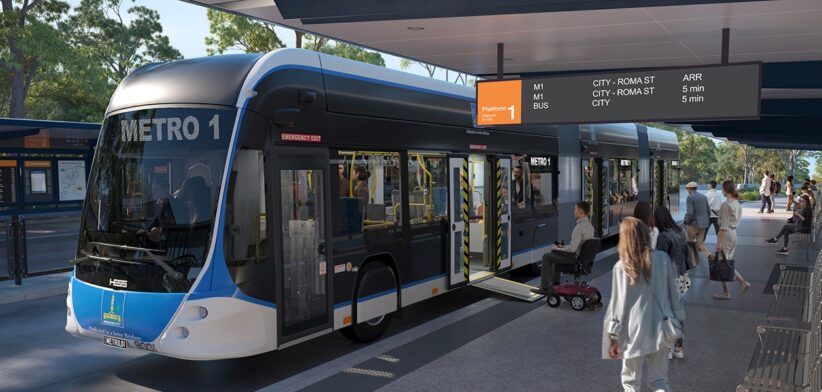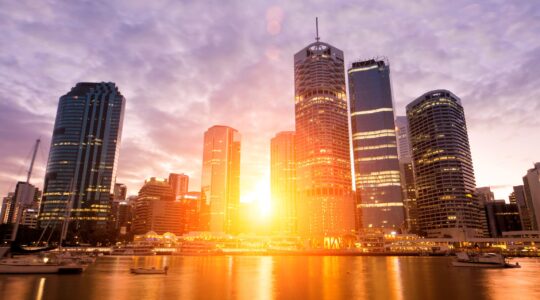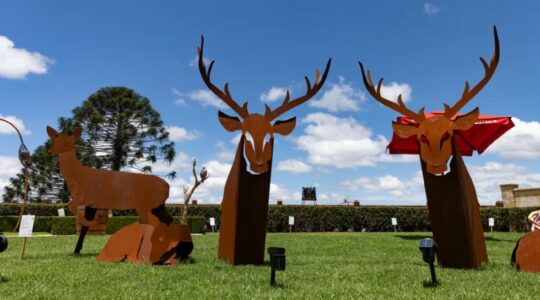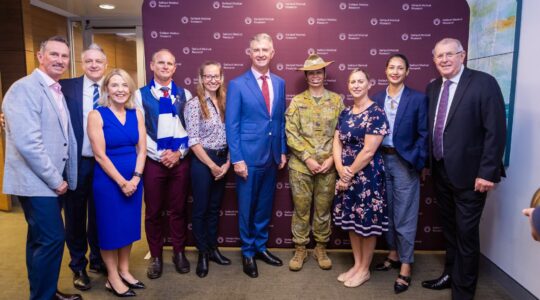Brisbane’s new bus network kicks up a gear from today with the second stage of the project now live.
Lord Mayor Adrian Schrinner said Brisbane Metro services now replaced route 111 and 160 bus services, becoming the permanent M1 Brisbane Metro service, running at five-minute frequencies between Eight Mile Plains and Roma Street.
Lord Mayor Schrinner said, in addition, June 30 marked the second stage of the new bus network, which included five new bus routes, four new all-day services, 12 combined bus routes for improved efficiency, three divided routes for better reliability and capacity for an extra 55,000 students to UQ, QUT and Griffith universities.
“The launch of these two revolutionary transport projects will transform Brisbane’s public transport to mass transit and support the city’s growing population,” he said.
“From Monday, the M1 Brisbane Metro will run between Eight Mile Plains and Roma Street, joining the M2 and boosting total Metro capacity to nearly 20 million trips a year.”
Lord Mayor Schrinner said the launch of the new bus network was the most significant overhaul of the city’s bus system in decades.
“The new network will deliver 160,000 new bus services, faster trips for more than 45 million people and service 44 additional bus stops a year than the current network.
“Buses do the heavy lifting for public transport in Brisbane, carrying around two-thirds of all public transport passengers.”
He said the new network would connect local buses with frequent Metro services running every five minutes on weekdays from 6am to 6pm, every 10–15 minutes at other times, and 24 hours on weekends.
“The CBD is the biggest choke point in Brisbane’s bus network, with too many buses stuck at the Cultural Centre, Victoria Bridge and Queen Street Tunnel.
“Together with Brisbane Metro and the soon-to-open inner-city tunnel, Brisbane’s new bus network will help unblock the bus bottleneck in the CBD.”
Lord Mayor Schrinner said more than 600 extra people were moving to Brisbane every week and the public transport network needed to grow with the city or risk more congestion.
“We’re building a legacy transport network that’s not just designed for today, but can grow for decades to come.”
The staged implementation of Brisbane Metro:
From January 28, 2025:
- Brisbane Metro serviced Brisbane’s most in-demand bus route, converting the Route 66 bus service into the permanent “M2” Brisbane Metro service, running at five-minute peak frequencies between RBWH and UQ Lakes.
- New school services were introduced in line with the start of the school term as part of the first stage of Brisbane’s New Bus Network, including nine new school routes and 17 services with route changes.
From June 30, 2025:
- Brisbane Metro services replaced route 111 and 160 bus services, becoming the permanent “M1” Brisbane Metro service, running at five-minute frequencies between Eight Mile Plains and Roma Street.
- The second stage of Brisbane’s New Bus Network commenced, including five new bus routes, four new all-day services, 12 combined bus routes for improved efficiency, three divided routes for better reliability and capacity for an extra 55,000 students to UQ, QUT and Griffith universities.
Quarter three of 2025:
- Brisbane Metro services will switch from the existing Queen Street Mall tunnel to the Adelaide Street tunnel, freeing up capacity on surface streets and allowing metro service frequency to increase to three minutes once the Metro fleet order is complete.
2025 beyond:
- Business cases to commence on the expansion of Brisbane Metro services to Carseldine, Springwood, Capalaba and the airport.
- Detailed planning to commence on the northern metro depot.








